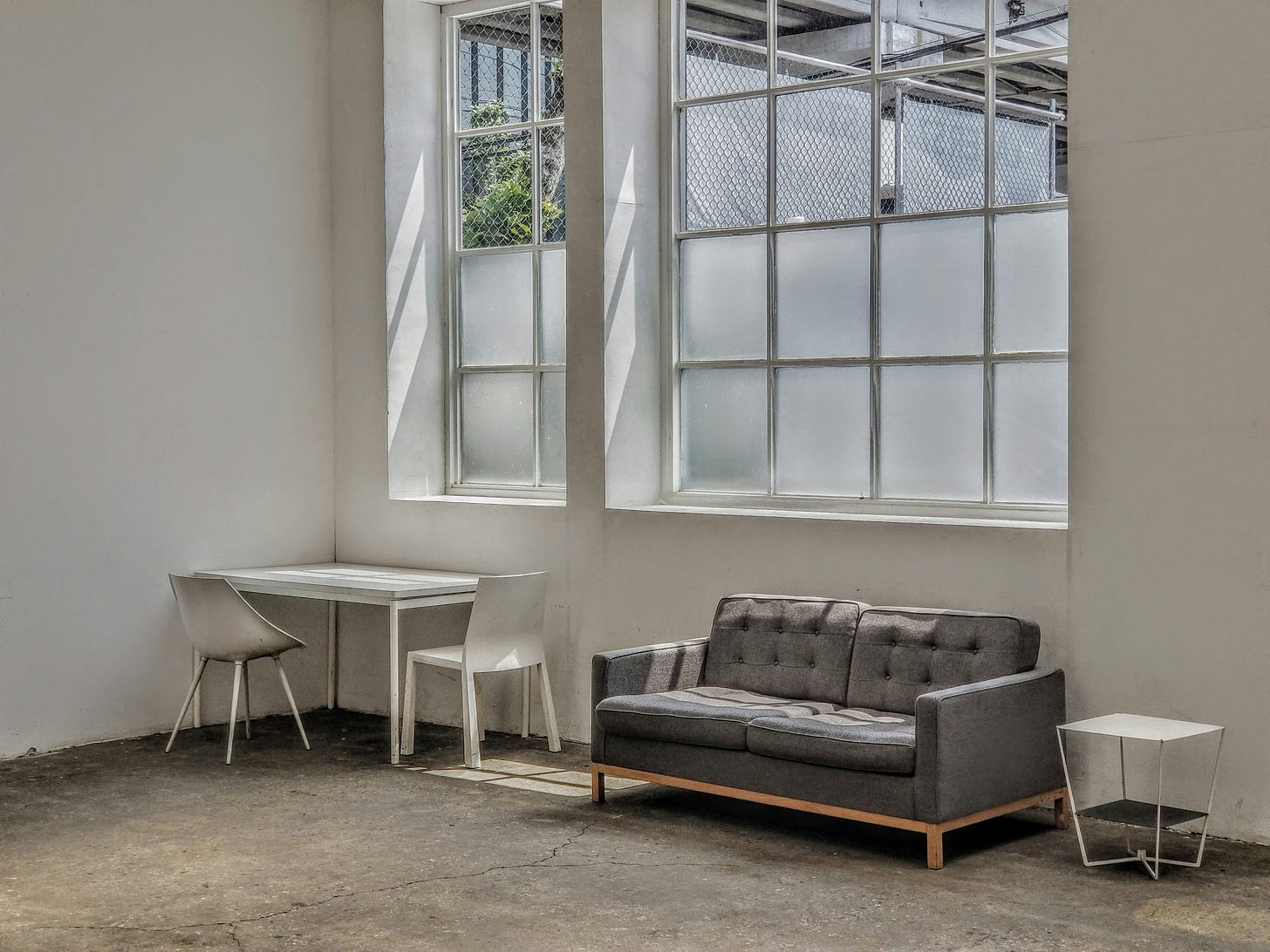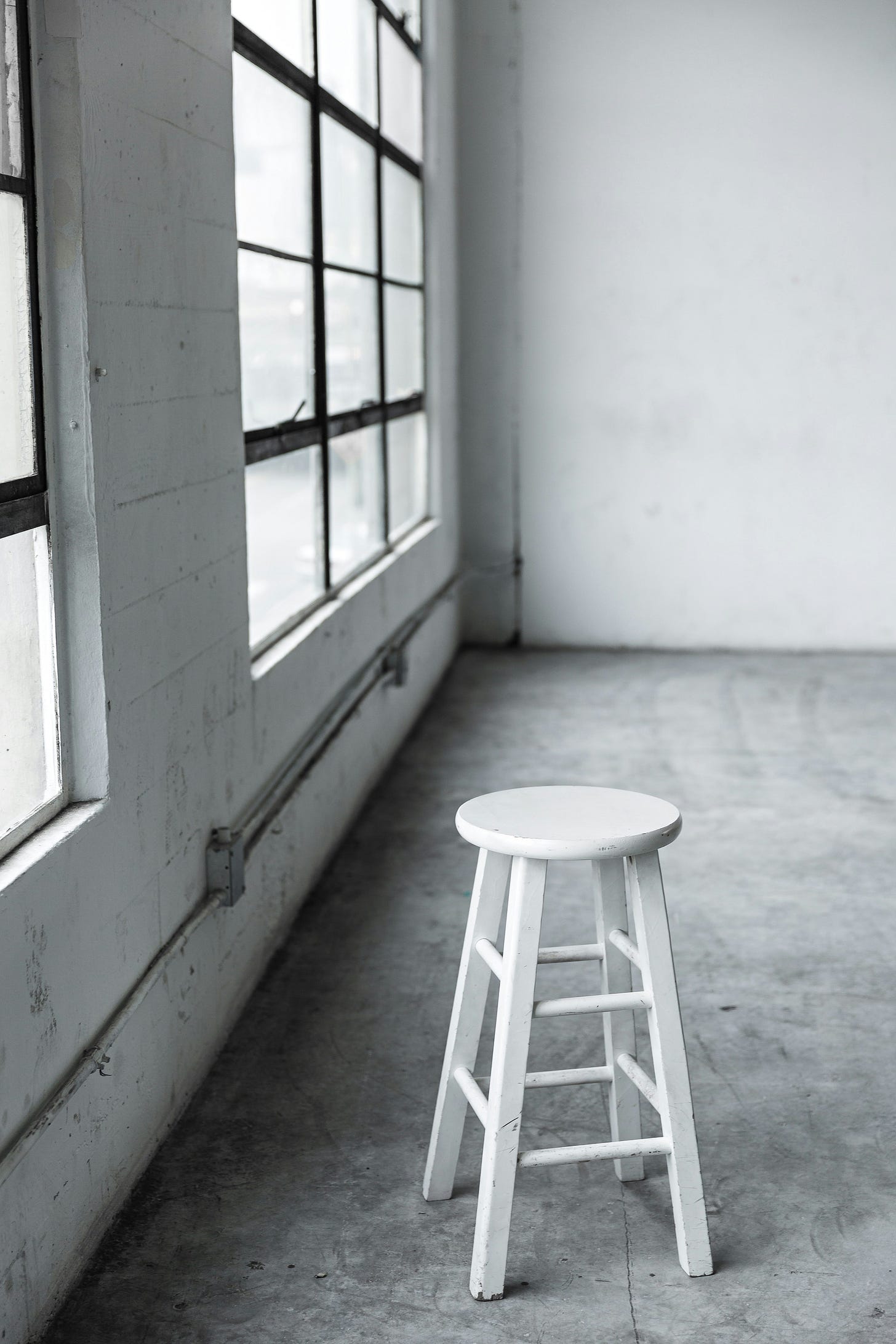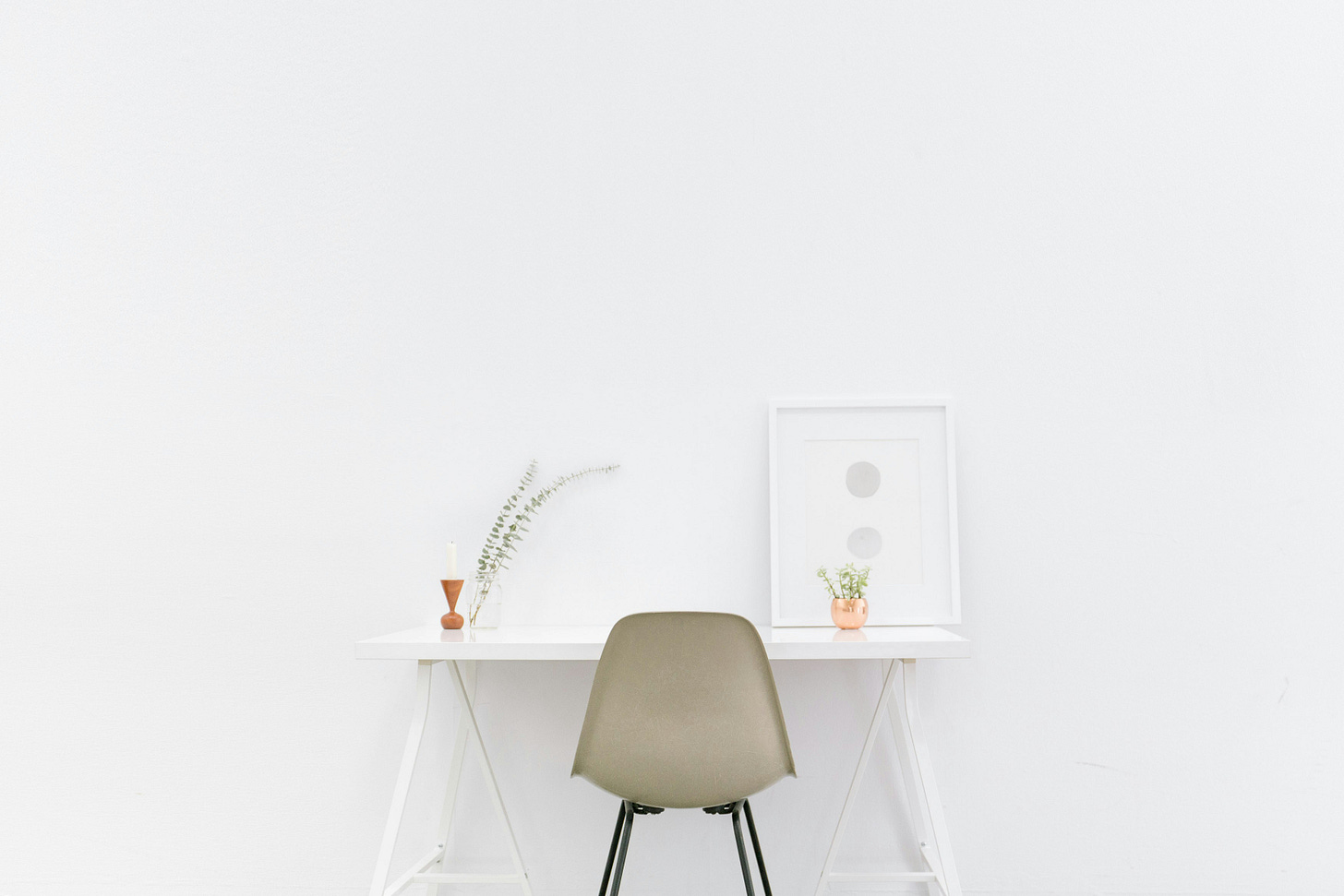Artists and their stuff: in defense of disarray
Artists can't be good minimalists.
Minimalism is a style characterized by extreme spareness and simplicity. It is often used to describe three-dimensional spaces like buildings. When used to discuss a lifestyle, the word minimalism evokes images of owning very few objects. Many forms of minimalism are considered aesthetically pleasing—however, minimalism may not be the best course for artists. This post looks at the relationship between creators and their stuff.
Chocolate economics
My least favorite class I ever took was economics in high school. The so-called “law” of supply and demand has never made sense to me because it takes the human variable out of the equation.
Supply and demand was first described to me by a friend’s dad in terms of chocolate. He claimed that if there was one hundred pieces of chocolate in the house (high supply,) the demand would be low. I was a third grader with a sweet tooth—my demand for chocolate was never low.
But if there was only one piece of chocolate in the house (low supply) the demand would be high, and he could ask a lot for that one piece of chocolate. Eleven-year-old me wasn’t stupid though, I knew that if there was only one piece of chocolate in the house, the mom should get it. 😇
At around the same age, my dad took me to a hoarder’s house. It was intended as a cautionary tale because I was already demonstrating hoarder tendencies in my room: keeping every scrap of paper that passed through my door and refusing to part with broken toys. I looked upon with horror at stacks of dirty dishes, paths through piled boxes, and a lifetime’s supply of empty toothpaste tubes. It was a formative experience and shaped the relationship I had with stuff, especially art supplies.

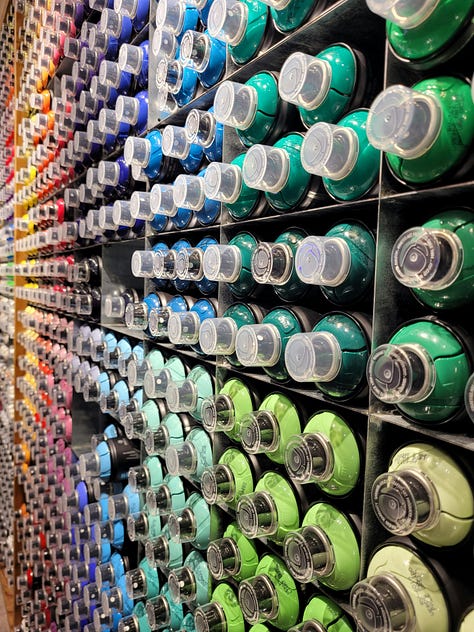
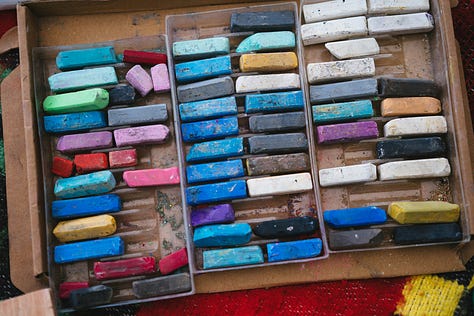

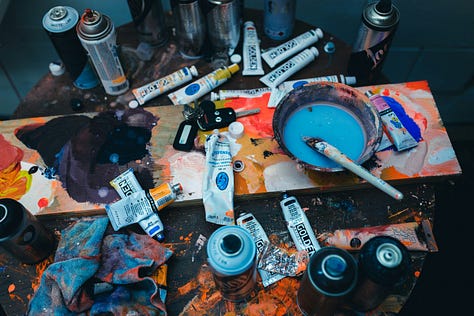
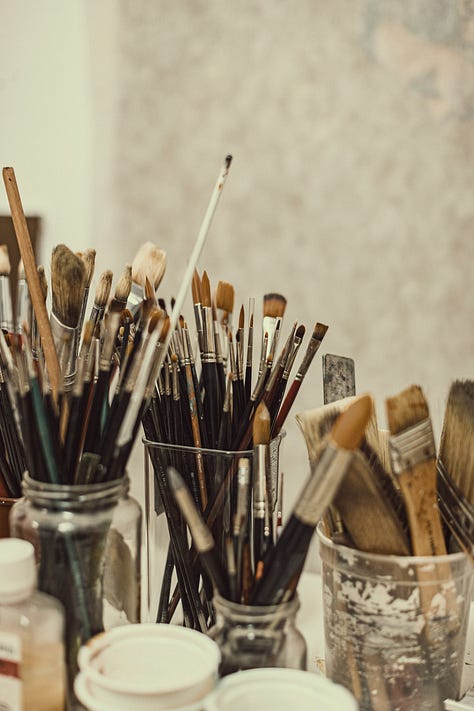
Scarce supplies affects the art process
Supply and demand even has an effect on artists. When I’m creating, the abundance or scarcity of my materials affects the process. When using fancy supplies, working with a limited quantity, or even just using something I didn’t want to run out of, I was very cautious about my art. When I had plenty of supplies or was trying to use them up, I took more risks, had more fun, and often was happier with the results.
Artists can’t be good minimalists
In the years following the visit to the hoarder’s house, my dad and I have talked about minimalism many times. It’s easy to see minimalism as a virtue or a goal to achieve, especially when it’s presented so often to creative people on social media.
But there are other factors involved in what stuff or art supplies a person owns.
Financial: Counterintuitively, minimalism is often expensive, the idea being you own a small amount high quality things. Waiting until you need a thing and buying it can get spendy especially when a person is experimenting or just starting out. But buying things in bulk, while on sale (or free,) and storing things until you can reuse them, often saves money. I get many of my art supplies used or as gifts, which means I spend less but store more.
Self-Sufficiency: The bane of my quest for minimalism is having many different interests and wanting to do all of them in-house. This leads me to storing bulky equipment like a printer and a quilt frame. I’m also quite analogue, which means I have pens, paint, brushes, charcoal, erasers, tape, markers of all sorts, ink, glue, scissors, and paper. So much paper. (And that’s just what I have on the table at the moment.)
Preparation: I don’t care to run to the store when I need stuff in the midst of a creative mania, I’d rather have it on-hand. I bring a sewing kit on trips and my sketchbook and pens when I’m out and about, which means I need to carry a bigger bag. Yeah, this is extra stuff, but it’s useful extra stuff.
Personality: The more minimalist a person is, the fewer chances there are for their personality to shine through. As humans, we get fascinated by things that might not serve a purpose. This is not inherently wrong, and nobody should feel bad about it. Decoration, detail, and a little bit of clutter speak about a person’s character—my parents liked to reassure guests that their house is not a museum. Minimalism is great for office buildings and public spaces—but embracing it in homes and studios is a early-onset symptom of a value shift toward more industrial, less human friendly, ideals.
The kind of minimalism that artists see in magazines and in inspiration photos online is not realistic to the average person (or average wallet.) To be an “optimal” minimalist, a person actually needs to have plenty of time and money. They’ll have fewer but higher quality supplies in their home. People who have less time or money tend to have more lower quality supplies.
Neither is bad. Every person needs to find their own balance of what they have on hand and what quality of art materials they feel comfortable using. Some people even believe that balance will find you. Visible mending artist Kate Sekules quips that no matter how big your space, you’ll fill it with a level of things that makes you feel comfortable.
At the end of the day, good artists will never be good minimalists, because they will always have an abundance of ideas, of art supplies, of random stuff that aids their creativity.

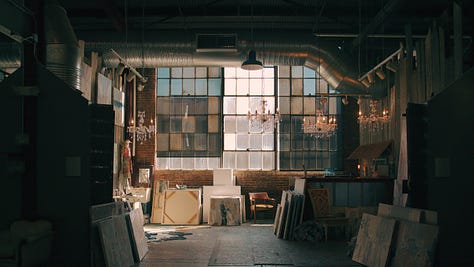
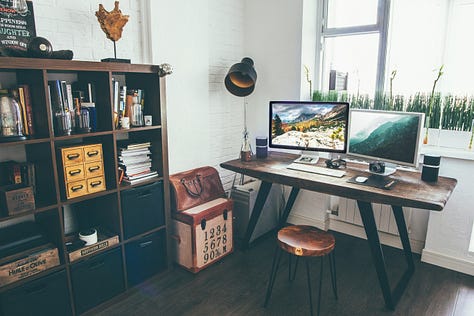
How to live in balance with stuff
However, artists can manage how much have by being intentional with what they choose to keep. If I have duplicates of something consumable, I try to use up one first. And if something stops working and I have a replacement, I will throw the broken one out. An example of this is highlighters. I have a few of my favorites: fancy ones that I’ve found on the ground or been gifted, free swag highlighters that I love because they are bright and smooth. Then I have others that are meh, that I use until they’re dull and dry and then throw them away. Stuff that I have needs to be in good condition. I’m doing no one a favor by storing unusable, worn-out-past-repair items.
My storage of art supplies plays a big part in how I use them. If I keep my pens in a pretty box, I’ll never use them. But if I keep them out on my desk, I use them all the time. Even though it looks a little messier, I create a feeling of abundance when they are out in the open.
P.S. I use cute mugs as desk organizers. They’re cheaper and more personable than storebought desk organizers.
Reusing, thrifting or “rescuing” things and art supplies is important to me. It saves money yes, but it also brings unexpected things into your art, and lowers the stakes. If you messed up and have to throw something out, it’s okay! It would have gone into the trash anyway. It’s the same thing if you need to downsize—easy come, easy go.
I’ve thought a lot about stuff, space, and minimalism as I’ve moved three times in the last year and had to adapt to a new (increasingly smaller) space each time. It’s harder to feel emotionally attached to stuff when I’m tripping over it every time I move. The perspective on “only keep the things that you love and are useful” has played a part as I’ve been downsizing and adapting to tiny-home life. Yet, I love a lot of things and my home is always in some level of disarray. (I assumed that a smaller space would be easier to keep clean and neat, but it’s not.)
My home is a place I live in and create. It is not a museum. As long as I keep it sanitary and things aren’t falling over1, we’re good.
How messy is your creative space?
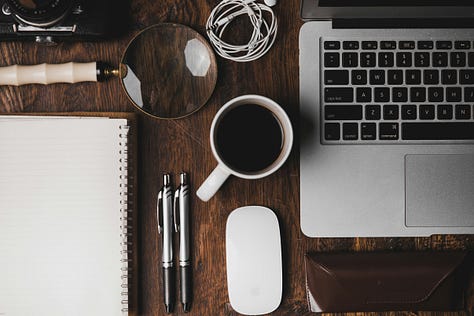
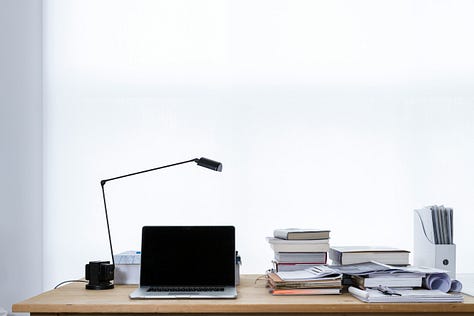
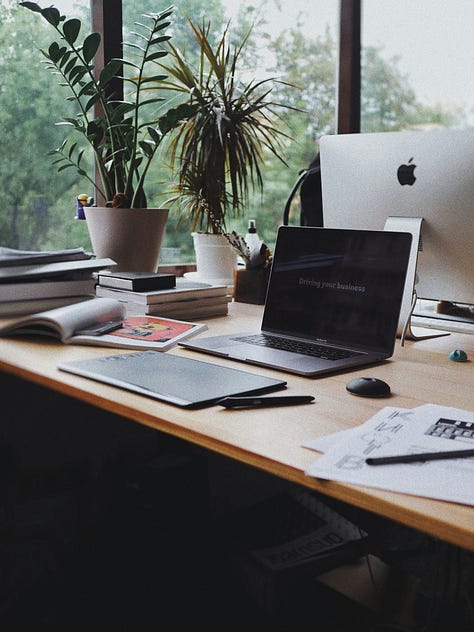


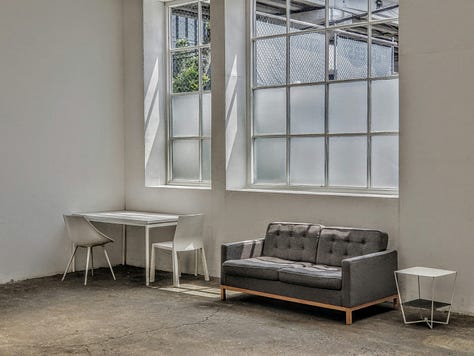
This is not as arbitrary as it seems. As soon as thing start falling or getting knocked over, I am no longer comfortable and can’t complete my activities of daily living well. My belongings are at risk from spills or falls, and the mess compounds as things knock each over like dominos.


